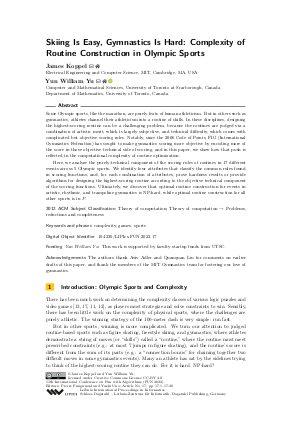LIPIcs.FUN.2022.17.pdf
- Filesize: 2.88 MB
- 20 pages

 Creative Commons Attribution 4.0 International license
Creative Commons Attribution 4.0 International license













Feedback for Dagstuhl Publishing